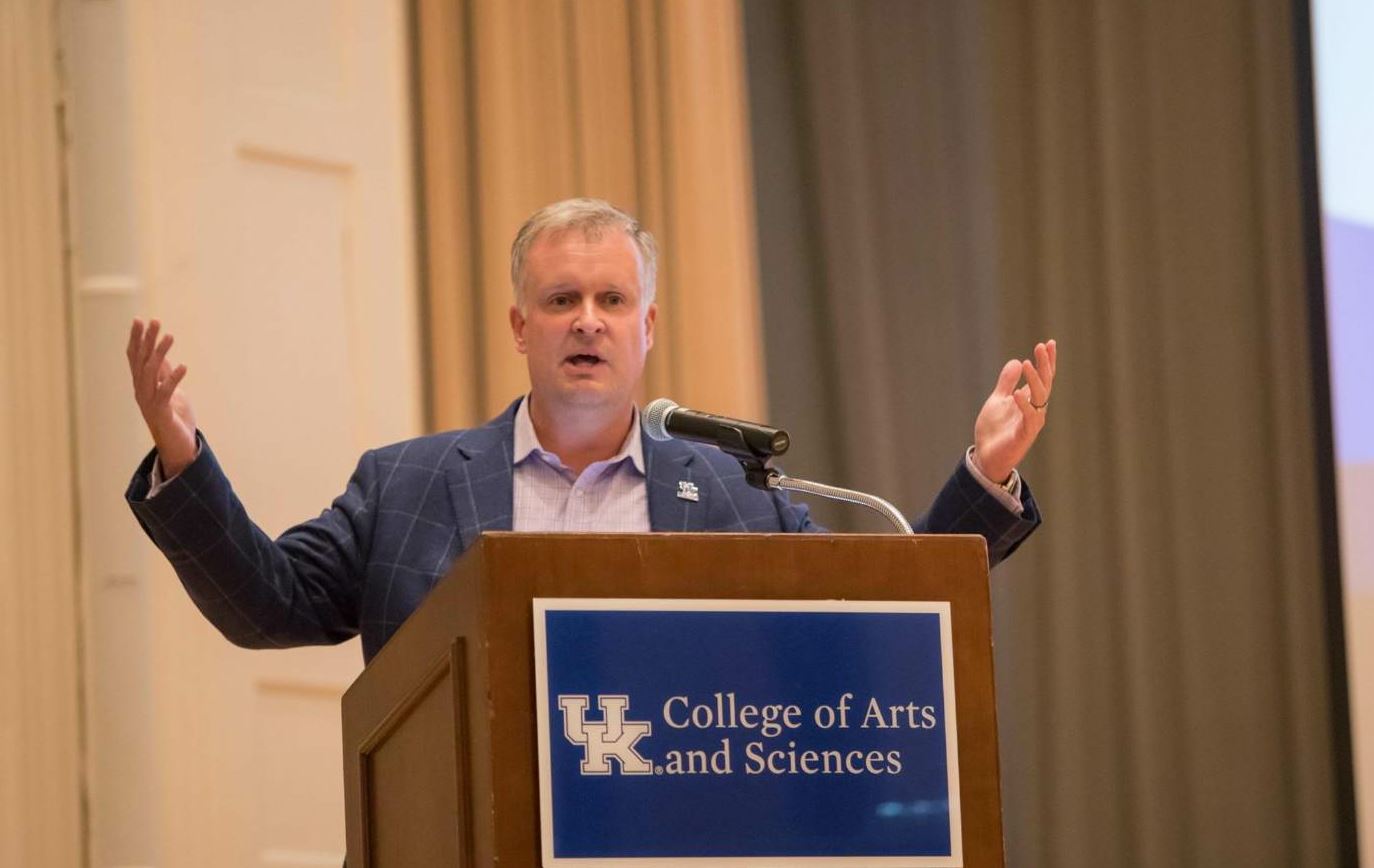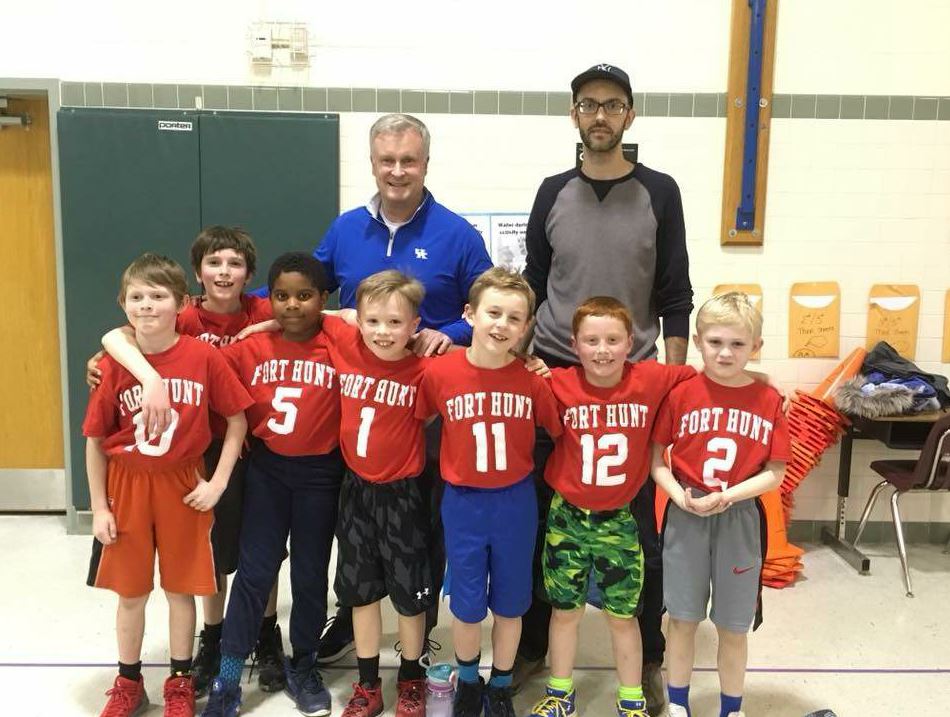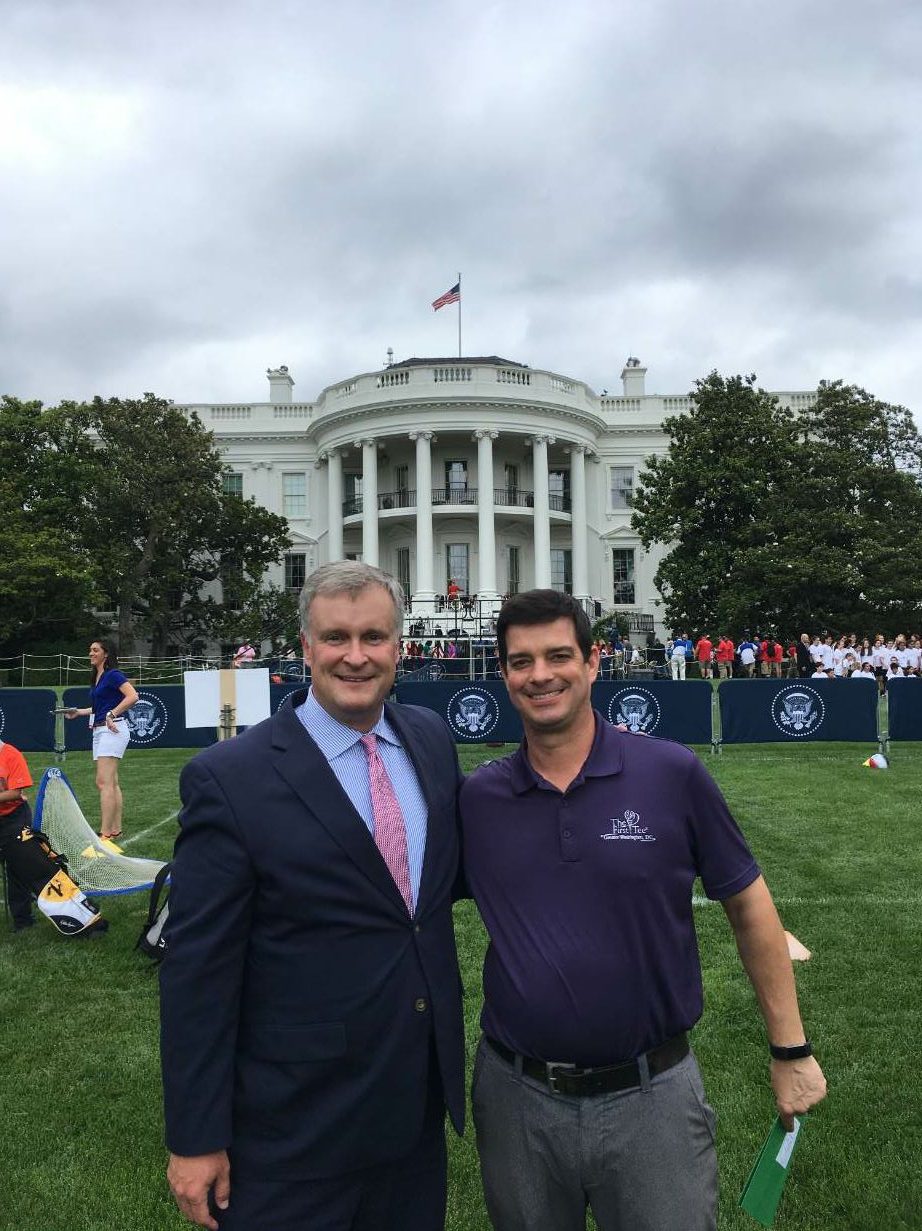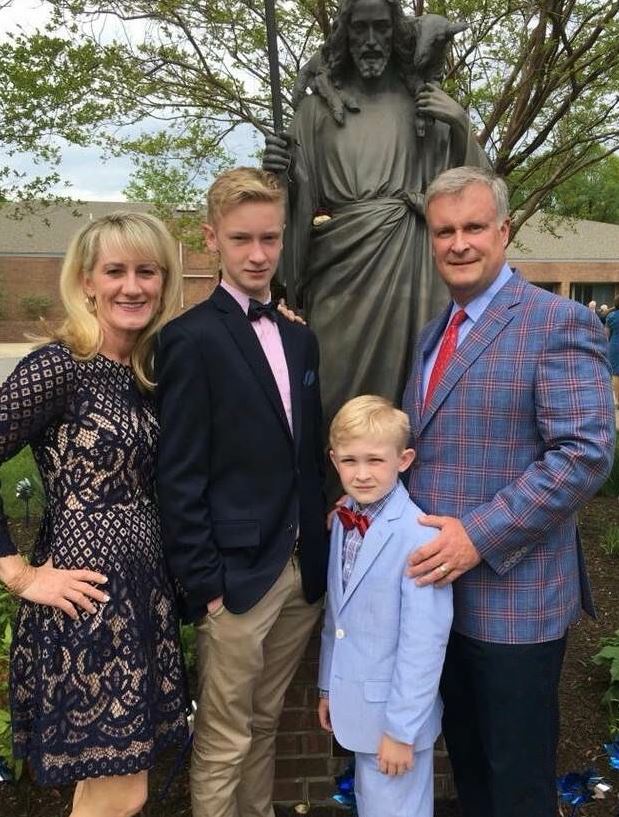Meet the National Exec: NSSGA’s Michael W. Johnson
BY AsphaltPro Staff

The National Stone, Sand and Gravel Association advocates on behalf of the aggregate industry, with its members representing more than 90 percent of crushed stone 70 percent of sand and gravel produced each year in the U.S.
Michael W. Johnson has been the president and CEO of NSSGA for nearly five years, since joining the association in August 2013. In this month’s Meet the National Exec department, AsphaltPro spent some time getting to know Johnson and learning more about NSSGA and the benefits it provides to its members in the aggregate industry.

Michael W. Johnson
What were you doing prior to becoming president?
Immediately prior to being the president and CEO of NSSGA, I was the executive vice president and chief advocacy officer for the National Beer Wholesalers Association. Before that I was the vice president for government affairs at the Wine and Spirits Wholesalers Association, and before that a government affairs staffer for the National Association of Homebuilders.
What are your chief goals for your time as president?
Advocacy is job no. 1 at NSSGA. My chief goal is to make sure that NSSGA is executing on our strategic plan and meeting our members’ expectations of their primary federal trade association. I believe it’s extremely important for a trade association to have a member-driven strategic plan that charts an aggressive course to achieve the goals and objectives that its members have told you are important to their businesses. NSSGA has successfully advanced pro-aggregates messages in Washington, D.C., taken the aggregates agenda to Congress and continued to fight for our smaller producer members.
Do you have a degree related to the industry?
Do I have a degree related to the stone sand and gravel industry? No. Do I have a degree related to advocacy? Yes. I hold bachelor degrees in political science and journalism from the University of Kentucky. Go Wildcats! I am also a graduate of the Institute for Organization Management.
Industry Info:

Johnson also coaches local youth basketball. He and his family reside in Alexandria, Virginia.
1. How did you get into the industry?
I’ve always had a focus on advocacy from my early days on Capitol Hill. I worked for a United States Senator as a member of his staff and campaign, and also with some other groups and causes. After that, I decided that I wanted a career in advocacy, and particularly in trade associations. I never set out to join the aggregates industry, but was glad to bring my advocacy experience to NSSGA. A search committee sought to find a new President and CEO for NSSGA, and they and member companies wanted someone who could squarely focus on advocacy as job no. 1 and help to build a trade association that would do the same.
2. What does membership in NSSGA mean to you personally?
Someone who has made the decision to join NSSGA has decided that it’s not just good enough to be a company engaged in this business. Our member companies recognize the importance and the value of being engaged in the public policy debates that directly affect their ability to do this business and do it well. Those that have vested their hard-to-earn dollars in a trade association understand the importance of a united voice and the strength of numbers.
3. How has membership in NSSGA benefitted your members?
We have been able to move the needle on public policy issues that affect the business of producing aggregates and the ability to do that in a way that is profitable and emphasizes the importance of safety. We have also been able to make progress on creating an environment where our member companies can grow.
When you’re producing the basic building blocks of anything significant, like our homes, hospitals, communities and infrastructure, and that business is going well, it means that things are being built. When our members can come together to affect the public policy debate in a way that encourages building and encourages growth, then we’re not only helping our industry, but we’re helping our economy and our country as a whole.

5. Could you give an example (or two) of a way your organization assists its members with workforce development?
The assistance we provide our members comes in a number of different ways. We host a jobs board where our members can post available jobs at their companies, which allows them to not just have the ability to advertise those jobs in their local communities, but nationwide. We also have created the AGG1 Academy so that we can help professionals in our industry develop and refine their skills through some world-class educational opportunities. NSSGA has been at the forefront of moving public policy on increased spending on vocational education programs and rational immigration reform.
6. What is your favorite method for recruiting new professionals to the industry in general? And why?
First and foremost, our members are having to do more with less as production numbers come back from the great recession. It’s a real challenge in an industry like ours, because the work that we do is hard and sometimes a little bit dirty. It’s certainly not the easiest work that people can do. So to find folks who have the needed skillset and abilities, and are willing to come into this industry, is tough to start.
Increasingly, we’re seeing that finding people who have that and can also pass a drug test is difficult with the legalization of marijuana in many places. At the same time, we’re not a new industry. We’re not a Silicon Valley start-up or, on the surface, have the things that the millennial workforce is attracted to.
NSSGA is committed to assisting our members in recruiting new professionals by engaging student chapters at a number of universities where there are mining and engineering programs. We are helping those young people understand the opportunities our industry has to offer after they graduate. Also, our Young Leaders program is a great way in which talented employees, 40-years-old and younger, can seek to come together, network and grow their careers. We know that there are thousands of jobs across the country and they’re great jobs. The average worker in an aggregates operation takes home $71,000 a year. These are good paying jobs with good benefits.
10. What are your top two or three ideas for helping your members, and the industry in general, stay strong in light of these changes?
We need to get back to a real and strategic national infrastructure investment plan. To do that, the administration and Congress must reprioritize infrastructure projects. It is not just about filling potholes and fixing bridges. It goes beyond getting us up to a good state with our current infrastructure. We need to think about the infrastructure we’re going to need in the future to compete in an increasingly competitive world economy.
We’re struggling to find the means to meet current infrastructure needs, while other countries like China are building for today and the future. China is investing heavily in their domestic infrastructure and building world-class infrastructure in other countries right now. This will be a benefit to the Chinese economy and improves trade and exports from the other countries. We must do a better job of thinking about infrastructure investment in a way that has us future- focused and ready to meet those challenges. The aggregates industry has to be able to have the folks in place, the workforce that’s trained, equipped and ready to meet that demand.

Johnson is an avid golfer and is currently the president of the executive committee of First Tee of Greater Washington, D.C., where kids and teens learn life lessons and leadership skills as they learn to play golf.
11. What other threats to the aggregates industry do you plan to guard against?
Most importantly, we are addressing a continued reluctance on the part of the federal government to make meaningful investment in infrastructure. This lack of investment hampers the industry because we move our product on the roads, rails and waterways of this country’s economic circulatory system.
Not having a strong federal infrastructure investment also makes it difficult for our industry to recover the volume lost after the 2008 recession. Getting that certain and robust funding back in place helps our national economy as well as our member companies, their employees and communities.
We also have to continue to guard against over-regulation from federal agencies. Rules and regulations based on unsound science hinder our ability to meet that demand once infrastructure investment funds are more available.
13. What sorts of events, training opportunities, etc. does NSSGA offer to members throughout the year?
NSSGA is very proud of the continued growth of the AGG1 Academy & Expo. We will continue to invest heavily and make sure that that our trade show and educational opportunities are world-class. In between those events, we continue to offer distance-learning programs with live and on-demand options. Not to mention Young Leaders, where top executives educate our younger generation with their personal and professional insights.
14. How does NSSGA recruit new members to its organization? And what are the chief benefits of membership?
NSSGA recruits new members to the organization in a few different ways, but the most effective way is member-to-member recruitment. Member-to-member testimonials about the value of being a member of NSSGA are, without a doubt, the best way to bring someone into our membership. Chief benefits of membership are access to member-only content that equips companies to be better at the business of producing aggregates, from the educational programs we offer to regulatory compliance assistance. Membership also helps companies be their own best advocate with the federal government and ensure that policies, from infrastructure investment to regulatory affairs, foster the growth of aggregates companies.
Get-to-Know-You Questions:
1. What do you see as the most important part of your job as NSSGA president?
The most important part of my job starts with staying connected to the membership, listening to what they’re telling us and recognizing their needs and expectations of their federal trade association. Then it’s on me, as president and CEO, to set a direction that will enable the association to meet those desires and deliver on that value proposition.
For me, I’ve always been driven to do more and to achieve at a higher level. I have never accepted the status quo as the best we can do. I love having someone articulate a challenge to me, and then helping them think through how to go out and meet that challenge. I think strategically and I’ve always had a natural draw towards leadership. I’m rarely the guy that sits in the back of the room and doesn’t come forward with an idea about how to get something done or make things better.
2. What do you find most enjoyable about being the president of NSSGA?
Watching how effective we can be when our members and our staff come together in pursuit of the goals and objectives in our strategic plan. You really get to see progress made on important public policy issues, and when we’re successful – when the aggregate industry is doing well – everyone is doing well. America is doing its best when we are building and growing. The two work hand in hand.
3. Could you share with our readers an example of a challenge you’ve overcome in the past and how you overcame it?
My leadership style is to look at difficult challenges as opportunities for creative solutions. This particular challenge was solved with goats and a grant.
As the grounds committee chairman for a local swim and tennis club, I faced the challenge of the property becoming overgrown with invasive and destructive vines and limited resources to address the problem. Not only was the area an eyesore, but the health of hundreds of large trees was being compromised. If those trees fell, and Washington, D.C., sees a lot of strong storms, the club’s power supply and facilities were at risk of significant damage.
I learned about a company called EcoGoats that provides herds of hungry goats that have a particular taste for the kind of invasive vines that we had in abundance. I also discovered a county grant program that provided funding for environmentally-friendly community enhancement.
In the end, the goats seemed to really enjoy gorging themselves on the invasive ivy and the grant award made the goats an affordable solution for the club. On top of that, the attention that the goats got from the surrounding community and local media led to visits from school and civic groups that actually resulted in some new members for the club.
Some Personal Info:

Johnson and his wife, Jill, have been married for 16 years. They have two sons: Wesley, nearly 14, and Wyatt, 8.
Wife and children’s names:
My wife of almost 16 years is Jill. We were married in 2002. We have two sons: Wesley, who’s soon to be 14, and Wyatt, who’s 8. Our family currently resides in Alexandria, Virginia.
Most influential book you’ve read/you would recommend to others:
For me, during the transition into becoming a CEO, it would have to be a book called, “What Got You Here Won’t Get You There: How Successful People Become Even More Successful,” by Marshall Goldsmith. It talked about how the skills that led you to be an overachiever as an individual player aren’t enough, on their own, to move up and lead teams. It really helped me to learn a different way of doing things to succeed at higher levels of management.
Do you have any hobbies or a favorite pastime?
I am an avid golfer, not necessarily an accomplished one, but definitely avid. I have been able to use that passion for golf to give back to the local community. I am currently the president of the executive committee of First Tee of Greater Washington, D.C., where kids and teens learn life lessons and leadership skills as they learn to play golf. I’ve served on the board for 13 years now. I was lucky enough to take something I really enjoy outside of the office and turn it into a way to “pay it forward.”
